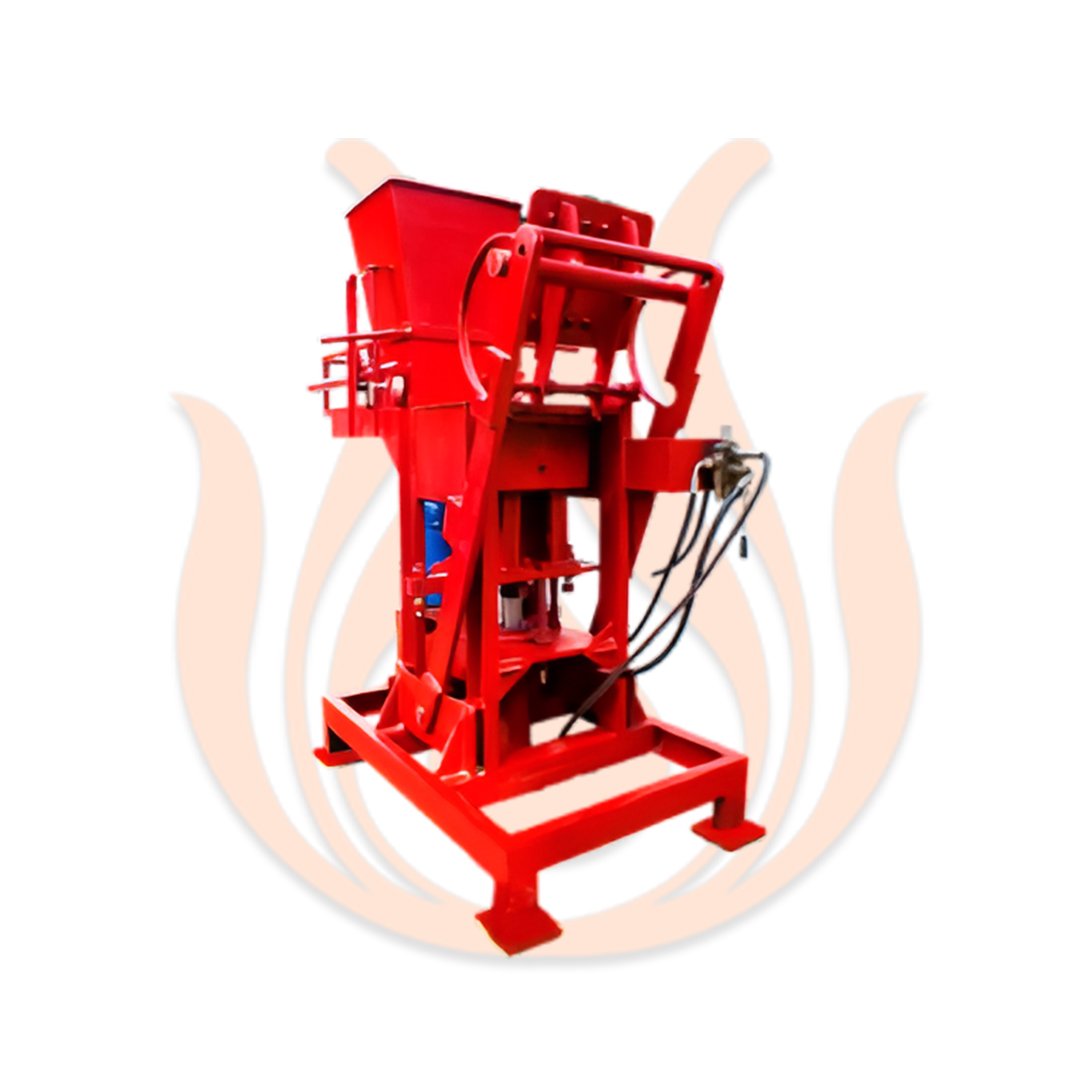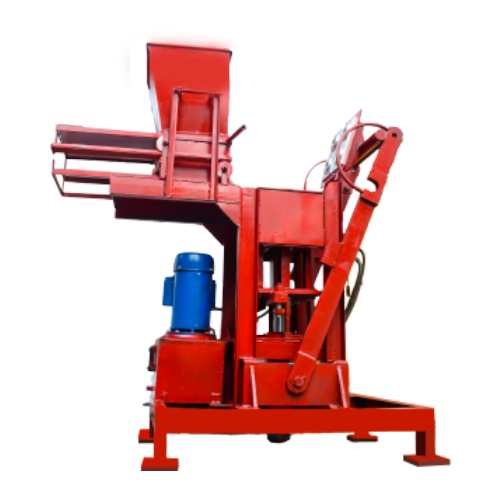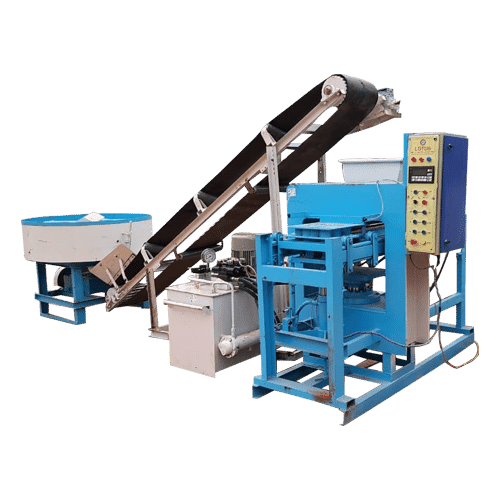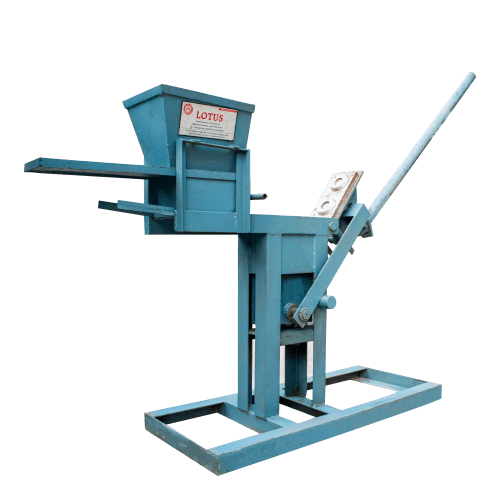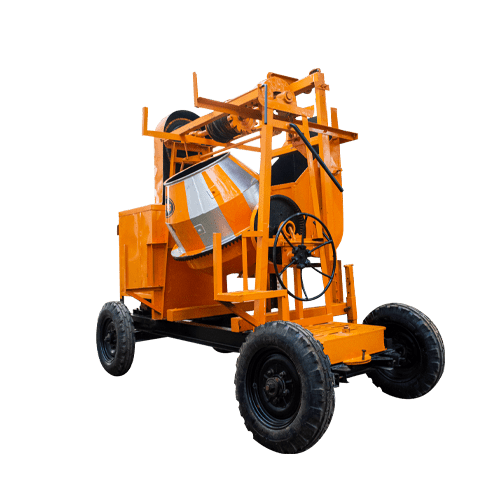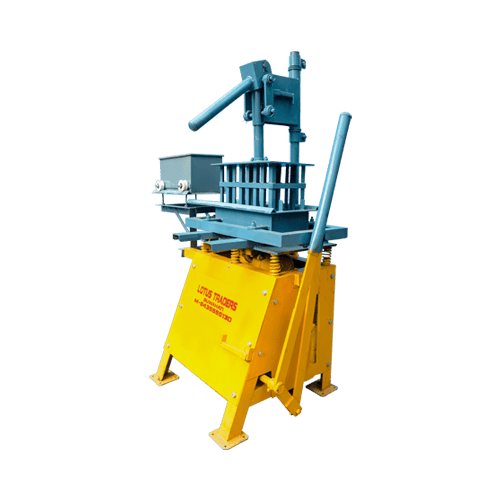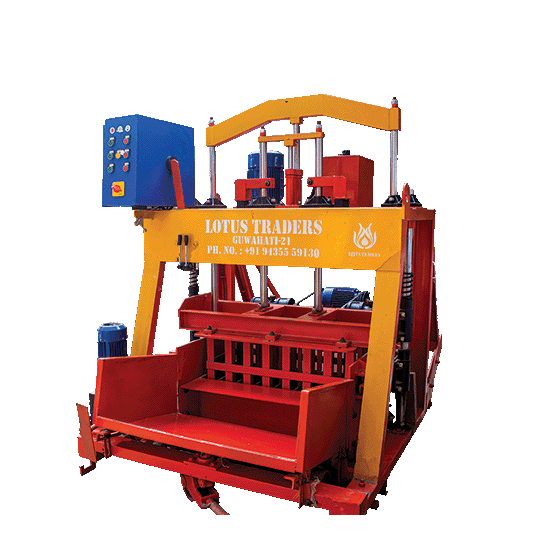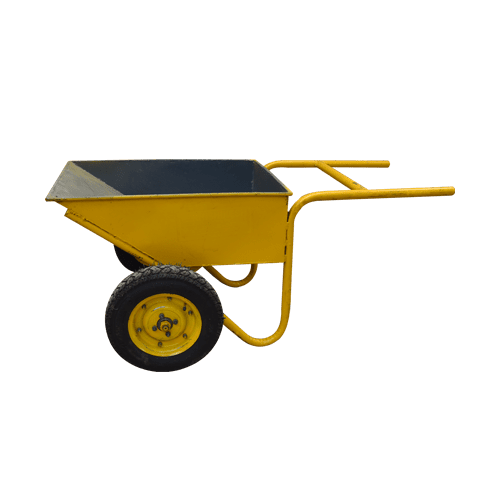3 In One Hydraulic Block Making Machine
Hydraulic Block Making Machine
- High quality materials
- Compliance with Standards
- Clear Product Information
- Warranty & Support
- Product Testing & Certification
- Delivery & Policy
- Ask a Question
- Estimated Delivery: 5 Days – 10 Days
- DESCRIPTION
FEATURES | SPECIFICATION |
Production Capacity | 2000 Pcs/per day |
Pattern 1 – solid brick | Size – 9 x 4.5 x 3 inch |
Pattern 2 – solid interlocking block | Size – 10 x 6 x 5 inch |
Pattern 3 – interlocking hollow concrete block | Size – 10 x 5 x 4 inch |
Power required | 2hp single phase |
Hydraulic tank | 25ltr |
Pressure | 1500 psi |
What is 3 In One Hydraulic Block Making machine?
The construction industry uses the 3 in 1 hydraulic block making machines to create slabs, blocks and bricks. The machine can make three various kinds of cement thanks to its “3 in 1” design.
Concrete blocks –Concrete blocks are a lateral, strong building material used in a variety of construction projects including the construction of walls and other structures.
Concrete bricks – Concrete bricks are used frequently in the building industry for minor applications like decorative walls or roads since they are lighter and smaller than blocks.
Large concrete slabs – Large concrete slabs also known as concrete pavers are flat slabs that are frequently used to construct roads, walks, patios and other outdoor places.
Water pressure is used in the hydraulic component of the machine’s name to seal the cement mixture and form it into the required shape. The impregnation method is frequently employed.
Features of 3 In one Hydraulic Concrete Block Making Machine
Here are some key features of a 3 in 1 hydraulic block making machine :
Adaptability – The main feature of the machine is that it can produce three types of concrete: block, brick and paver. Therefore, its uniformity makes it an easy and economical option for a wide range of concrete manufacturers.
Hydraulic System – The machine is equipped with a hydraulic system that provides the power required to mix and harden the concrete mixture. Production activities are carried out efficiently and continuously thanks to the hydraulic system.
Automatic process – Automatic process is a common feature of 3 in 1 wet concrete machines. This means that tasks such as raw material processing product moulding and extrusion. It can work automatically and eliminate manual labour.
Performance – The performance of one tool can vary greatly. Small machines can produce hundreds of bricks and blocks.
Quality control – Modern machines typically have quality control features such as vibration systems that compact the concrete mix and ensure the finished product is uniform.
Energy efficiency – Reduce operating costs and environmental impact. So many manufacturers focus on energy-saving designs. Features such as motors and energy saving systems can be incorporated.
Durability and Reliability – If you use these devices intensively. Therefore, they are usually made with durable materials and components that meet the requirements of the construction industry. Choose a car from a reliable company with a reputation for excellence and reliability.
Safety Features – Operator safety and accident prevention are our top priorities. Therefore, these devices often have safety features such as emergency stop buttons, guards and sensors.
Uses of 3 In One Hydraulic Block Making Machine
Here are some uses of 3 In One Hydraulic Concrete Block Making Machine:
Building Construction – Walls, partitions and structural components of residential, commercial and industrial buildings are made of machine-made concrete blocks and bricks.
Sidewalks and pavements Construction – Driveways, sidewalks, patios and outdoor areas are constructed of composite concrete slabs. It gives a look of beauty and durability and is available in various sizes and colours.
Retaining walls – Retaining walls are used to create small tiered garden beds, support landscape structures and prevent soil erosion. Concrete bricks and bricks are often used to build retaining walls.
Road construction – In road construction, concrete blocks can be used to build fences, curbs and other roadside elements.
Landscaping – Gardening, landscaping and decorative stone are just a portion of the decorative concrete products that can be produced using these 3 in 1 hydraulic concrete block making machine.
Drainage structures – These machines are use to build drainage infrastructure such as ditches, water pipes and storm water management systems by using concrete blocks and bricks.
Infrastructure projects – Construction of schools, hospitals, bridges and other public works are among the major projects used.
Housing Projects – Concrete blocks and bricks are often used in low cost housing projects due to their affordability and durability.
Production of concrete products – In addition to the construction industry, by companies specializing in the production of commercial concrete products including manufacturers of precast concrete components such as blocks, bricks and paving stones.
Benefits of 3 In One Hydraulic Block Making Machine:
These machines are valuable tools in the construction and production of concrete products due to its many advantages. Some key benefits are:
Adaptability – The main feature of the machine is that it can produce three types of concrete: block, brick and paver. Therefore, its uniformity makes it an easy and economical option for a wide range of concrete manufacturers.
Cost efficiency – Compared to buying a different machine for each type of product, this machine can save money due to its ability to process different types of products. This reduces the capital needed to buy equipment.
Space Saving – Producing a variety of solid products in a single machine reduces the space required on a production or construction site.
Labour saving –Many 3 in 1 machines now have automatic or semi-automatic functions that eliminate the need for manual labour. Productivity can be increased and production costs reduced in the process of feeding, manufacturing and product removal.
Consistency – This type of machine flow provides precise control during the production process resulting in consistent product quality.
Durability and Reliability – If you use these devices intensively. Therefore, they are usually made with durable materials and components that meet the requirements of the construction industry.
Increased production capacity – Depending on the size and model, this machine can easily meet the needs of large projects by producing large quantities of concrete products per hour.
Energy efficiency – Reduce operating costs and environmental impact. So many manufacturers focus on energy saving designs.
Safety Features – Operator safety and accident prevention are our top priorities. Therefore, these devices often have safety features such as emergency stop buttons, guards and sensors.
How 3-in-1 hydraulic concrete block making machine works?
A 3 in 1 hydraulic concrete block making machine is a tool which is designed to automate the production of paving stones, bricks and concrete blocks. Here is a general description of how such a machine works,
although the exact operation may vary slightly depending on the make and type of machine:
Prepare materials – Before starting the process, you must first prepare the concrete mixture. Cement, aggregate (such as sand and gravel), water and additives (if necessary) are usually mixed according to a predetermined formula or recipe. To achieve the desired product quality, the material must be homogeneous.
Material Feeding – Pour the ready mixed concrete into the machine’s hoppers or containers. Some machines may load components automatically while others may require manual loading.
Preparing the mould – The machine contains moulds that determine the size and shape of the final concrete product. It can be customize based on the specific requirements project needs. Typically the mould is prepared for the next production run.
Hydraulic Pressure – The heart of this machine is the hydraulic system. When the production cycle begins, hydraulic cylinders apply pressure to the concrete mix in the mould. This pressure compresses the mixture and fills the mould completely and evenly.
Curing – Depending on the specific machine and the type of product being manufactured, maintenance or repair procedures may be required. This includes using steam or other methods to speed up the curing of the concrete.
Product Ejection – After the concrete has set and hardened, the hydraulic system is released and the pressure is released. The mold is removed or opened and the finished concrete product is ejected from the machine. These processes are often automated and may involve processes such as conveyors or other systems to move products to collection points.
Quality control – Modern machines typically have quality control features such as vibration systems that compact the concrete mix and ensure the finished product is uniform.
Repeat the process – to prepare the device for the next production cycle. If concrete products of different shapes and sizes are to be produced the mould can be adjusted or replaced.
Cleaning and Maintenance – Regular maintenance is required to keep the machine in optimal condition. To prevent deposits and regularly guarantee product quality, it is also necessary to remove concrete residues from forms and other parts of the machine.
What makes the 3-in-1 hydraulic concrete block making machine unique?
These machines are a unique and versatile tool for concrete production. They offer a number of advantages over other methods which makes them unique such as:
Adaptability – The main feature of the machine is that it can produce three types of concrete: block, brick and paver. Therefore, its uniformity makes it an easy and economical option for a wide range of concrete manufacturers.
Hydraulic System – The machine is equipped with a hydraulic system that provides the power required to mix and harden the concrete mixture. Production activities are carried out efficiently and continuously thanks to the hydraulic system.
Automatic process – Automatic process is a common feature of 3 in 1 wet concrete machines. This means that tasks such as raw material processing product moulding and extrusion. It can work automatically and eliminate manual labour.
Cost efficiency – Compared to buying a different machine for each type of product, this machine can save money due to its ability to process different types of products. This reduces the capital needed to buy equipment.
Quality control – Modern machines typically have quality control features such as vibration systems that compact the concrete mix and ensure the finished product is uniform.
Energy efficiency – Reduce operating costs and environmental impact. So many manufacturers focus on energy saving designs.
As a result, 3 in 1 hydraulic concrete block making machine seem to be improving the construction industry. A unique combination of simplicity, flexibility and quality has revolutionized the way bricks and blocks are built.
This machine not only produces all kinds of blocks such as normal blocks, concrete blocks, complete blocks, etc., but they ensure the quality, uniformity and quality of the products.
Automated systems and services improve productivity, reduce operating costs and increase productivity. You can also choose the size and shape of the bar, and increase the level of advertising to meet the different needs of projects of any size.
As the construction industry continues to evolve and adapt to modern production methods, this machine is innovative, efficient and sustainable. Design and energy efficiency have become important in the construction industry.
These tools not only improve the speed and reliability of suspension production but also contribute to increasing the goals of the construction industry.
In a world where efficiency, quality and sustainability are paramount, the 3 in 1 hydraulic concrete block making machine is an essential tool to help construction projects achieve greater efficiency, sustainability and the environment.
Frequently Asked Questions
Some factors to consider while buying this machine are:
⦁ Explore the different types and models of 3 in 1 hydraulic concrete block making machine on the market. Consider features, performance and functionality to choose the one that best suits your unique needs.
⦁ Considered the production you need for your projects. Since the production of different machines is not the same, choose a machine that can produce the number of product within your desire time.
⦁ Decide the style and amount of bricks or blocks you want to make. Make sure the device you choose, whether its a standard blocks, interlocking pavers or hollow blocks fits the length and type you need.
⦁ Consider the degree of automation required. Some machines offer highly automated features to feed, mix and block materials, increasing productivity and reducing labour costs.
⦁ Look for machines made from high quality materials and components. Machine durability is critical to withstanding most uses and to keep producing good quality blocks for a long time.
⦁ Check the configuration of the electrical system, as it plays an important role in block pressure. See Weights and Controls for block usage and stability.
- Production capacity, brick type, and power source are all factors.
- Automation level
- Needs regarding durability and the maintenance
- Price
- Brand recognition
- Post-purchase assistance and service
Here are reasons why you should want to buy this machine:
⦁ The main feature of the machine is that it can produce three types of concrete: block, brick and paver. Therefore, its uniformity makes it an easy and economical option for a wide range of concrete manufacturer.
⦁ The machine is equipped with a hydraulic system that provides the power required to mix and harden the concrete mixture. Production activities are carried out efficiently and continuously thanks to the hydraulic system.
⦁ Automatic process is a common feature of these machines. This means that tasks such as raw material processing product moulding and extrusion. It can work automatically and eliminate manual labour.
⦁ Compared to buying a different machine for each type of product, this machine can save money due to its ability to process different types of products. This reduces the capital needed to buy equipment.
⦁ Modern machines typically have quality control features such as vibration systems that compact the concrete mix and ensure the finished product is uniform.
⦁ Reduce operating costs and environmental impact. So many manufacturers focus on energy saving designs.
The advantages of using these machines are:
⦁ Adaptability->The main feature of the machine is that it can produce three types of concrete: block, brick and paver. Therefore, its uniformity makes it an easy and economical option for a wide range of concrete manufacturers.
⦁ Cost efficiency->Compared to buying a different machine for each type of product, this machine can save money due to its ability to process different types of products. This reduces the capital needed to buy equipment.
⦁ Space saving->Producing a variety of solid products in a single machine reduces the space required on a production or construction site.
⦁ Labour saving->Many 3 in 1 machines now have automatic or semi-automatic functions that eliminate the need for manual labour.
⦁ Consistency->This type of machine flow provides precise control during the production process resulting in consistent product quality.
⦁ Durability and reliability-> If you use these devices intensively. They are usually made with durable materials and components that meet the requirements of the construction industry.
⦁ High production capacity->Depending on the size and model this machine can easily meet the needs of large projects by producing large quantities of concrete products per hour.
⦁ Energy efficiency-> Reduce operating costs and environmental impact. So many manufacturers focus on energy saving designs.


